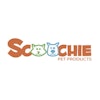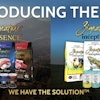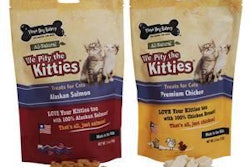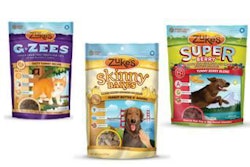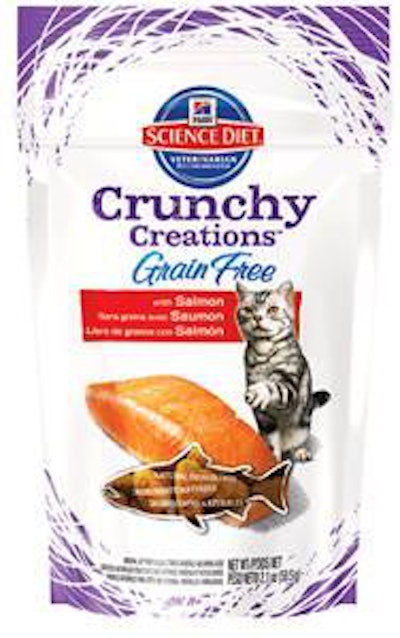
The humanization of companion animals is no trade secret, and the phenomenon is only getting more prominent. As a result, many of the top human food trends have found their way into the petfood market-particularly those that focus on the health and wellness of our furry family members.
Better health through nutrition is a significant topic these days in the human food industry, according to The Hartman Group Inc.'s report, "Ideas in Food 2013-A Cultural Perspective." Sugar in particular is a red flag for some consumers, with fructose bearing the brunt of the scrutiny. Added sugar, according to Hartman, is being linked to systemic inflammation, which in turn can lead to cardiovascular disease, diabetes, cancer and a whole host of other medical ailments.
Gluten-free has become a mainstream idea and product sell, and that has led to the desire for alternative ways to gain the nutritive benefits of whole grains, nuts and seeds. Nut meal, coconut "flour" and raw, sprouted, popped and puffed grains are some of the other options companies are now providing for consumers.
Other health/nutrition connections in human food trends, according to Hartman's report, include eating more plant-based foods, supporting locally sourced foods and using foods as medicine (whole grains, protein, omega-3 fatty acids, probiotics, botanicals).
This trend is just as significant in the petfood industry, where companies are coming out with grain-free dog and cat food and treats, products that boast no added sugars (or dyes or artificial preservatives), and products rich in nutrition additives like omega-3s.
Nutrition for seniors is a prominent extension of the health and wellness trend, and one that has captured ground in both the human and pet worlds. "If you look into the human nutrition and health arena, you see certain trends tied in with the latest ingredient/nutrient technology that's out there," said Jeff Alix, global marketing manager for pet nutrition at DSM. "You see a growing demographic of senior citizens that are living longer and having a longer period of time in that senior life stage. The same thing is happening on the animal side, with dogs and cats, because we're seeing a growing trend in the number of cats people are owning, and also the number of smaller dogs.
"You do see that animals are living longer, and the petfood industry realizes now that the pet geriatric lifestage [is significant]," said Alix. "There's a lot more emphasis in nutritional support for this senior stage of life."
There's a lot of obvious crossover between the human and pet side of things when it comes to aging. Bone degeneration, immune system functionality and cognitive function and decline are just a few that both markets are focusing on. "The aging [human] population today represents 17% [of the total population], and within the next 20 to 30 years it's expected to be very close to 20%," said Roger Clemens, DrPH, CFS, chief scientific officer for Horn. "And that poses its own challenges. What are the nutrition requirements, and what should be considered in that population?" Heart health, gut health, skin integrity/health—"Those are important in human health, and are equally germane to questions in the health of peoples' animals today," he said. "So there's some cross-fertilization."
Weight management is yet another trend prominent in human food that has made its way into the pet market. According to the 2012 National Pet Obesity Awareness Day Survey, conducted by the Association for Pet Obesity Prevention, 36.7 million US dogs (52.5%) and 43.2 million cats (58.3%) are overweight or obese. With these numbers comes a rise in type 2 diabetes cases in animals.
According to petfood industry experts, the humanization of pets plays a significant role in this issue. "Typically, overweight people have overweight pets," said Clemens. "We need to help educate people so they can stay clear of that."
As the fluidity of human food trends and petfood trends increases, it brings up unique concerns for the petfood industry to deal with. The bottom line is that pets are different from humans, said Clemens. Their nutritional needs are different, and some human trends such as gluten-free and grain-free can be dangerous when cross-applied. "People will put more energy into the quality of petfood than the quality of food that they feed themselves," said Clemens. "It's a big opportunity for us to understand the differences and the similarities so that we can have the quality of life for humans as well as the quality of life for pets."
That gaining of knowledge, however, may be the easier part of the equation. "It's really easy to transfer the knowledge over to the animal side," said Alix. "The biggest hurdle is regulatory affairs. Science is advancing at a phenomenal rate; our regulatory body is not. Their knowledge base is very old, and their measuring stick is very short. The cost to bring new ingredients into the petfood arena based on solid nutritional science becomes difficult, because the science is much more sophisticated than what the regulatory body can articulate at this point in time."
Once again, just as in the human food industry, education may be the key. "There's less and less choices of what to put in petfood, and trends are based on perception, not on the science," said Lisa Alley-Zarkades, vice president of Horn Animal Wellness. "We want to be able to address that at the consumer level."


